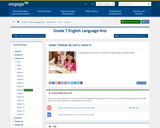
In this lesson, students work with Steps 3 and 4 of the researcher’s roadmap.
- Subject:
- English Language Arts
- Material Type:
- Lesson Plan
- Provider:
- EngageNY
- Author:
- Expeditionary Learning
- Date Added:
- 04/04/2014

In this lesson, students work with Steps 3 and 4 of the researcher’s roadmap.
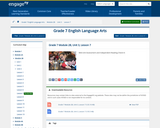
In this lesson, students complete the Mid-Unit 3 Assessment.
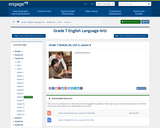
In this lesson, students choose the ads they will analyze in their performance task.
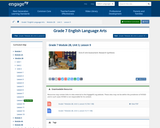
In this lesson, students have arrived at Step 6 on the researcher’s roadmap. For the End of Unit 3 Assessment, they write several paragraphs that synthesize their learning and demonstrate what they have learned about advertising.

This lesson is students’ formal introduction to the overarching research question of the unit: “What are the potential benefits and risks of entertainment screen time, particularly to the development of teenagers?” This serves as the “big idea” for students’ research; it will serve as the lens through which the research is focused.
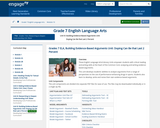
These English Language Arts/Literacy Units empower students with critical reading and writing skills at the heart of the Common Core: analyzing and writing evidence-based arguments.
This unit develops students’ abilities to analyze arguments from a range of perspectives on the use of performance-enhancing drugs in sports. Students also learn to develop, write and revise their own evidence-based arguments.
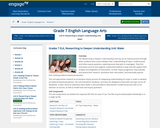
The Researching to Deepen Understanding units lay out an inquiry process through which students learn how to deepen their understanding of topics. Students pose and refine inquiry questions, exploring areas they wish to investigate. They find and assess sources and organize researched material in ways that will support their analysis and integration of information.
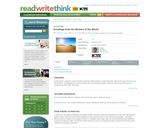
In this lesson, students research biomes and then utilize iPads to create postcards with the free app PhotoCard by Bill Atkinson. Combining their research notes with corresponding images, students write about their biome in postcards as they “visit” the biome.
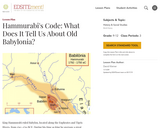
Students learn about life in Babylonia through the lens of Hammurabi's Code. This lesson is designed to extend world history curricula on Mesopotamia and to give students a more in-depth view of life in Babylonia during the time of Hammurabi.

In this CCSS lesson, students will explore this story through text dependent questions, academic vocabulary, and writing assignments.
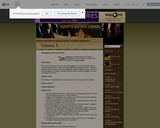
The focus of this lesson is on the use of hieroglyphs as a form of communication, record keeping, and as a means for preserving and passing down history. Students will learn basic information about the alphabet, common Egyptian words, and how to read hieroglyphic messages. Students will also practice using hieroglyphs to create messages of their own.
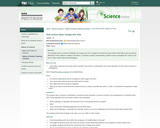
In this lesson, students work, in groups or individually, to research the life and ideas of a person involved in the development of a scientific theory which faced opposition from the society in which it was developed.
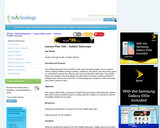
In this lesson, students will prepare a presentation defending their opinion about whether money should be spent on additional space exploration using the Hubble or a similar telescope or whether it should be used for immediate research needs on Earth. Students will research at least five discoveries that have been made using the Hubble telescope.
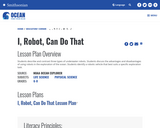
Students will discuss the advantages and disadvantages of using underwater robots in scientific explorations and be able to describe and contrast at least three types of underwater robots. Students will work collaboratively and conduct research to learn more about underwater robots and prepare and present a brief oral report of the capabilities of their assigned robot. As a culminating assessment activity, students will decide which robots would be best suited to a mission when read a description of the mission.

This lesson will use the "infinite variety" of resources on the Internet to let students find their own image of Othello. The lesson will take them on a WebQuest, first to textual references, and then to on-line searches for images of Othello in film, play productions, and art. Then, students will write an essay about the casting of Othello to conclude the lesson.
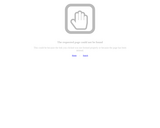
Students will be introduced to the Industrial Revolution's problem of child labor. Students will be able to describe advances in machinery during the Industrial Revolution. Students will identify reasons for the use of child laborers during the Industrial Revolution and describe how child laborers lived during the Industrial Revolution. Some of the YouTube links are dead, but the images are included in the pdf.
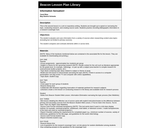
In this lesson, students work on narrowing a topic for an expository writing piece, conducting research, and creating source cards.
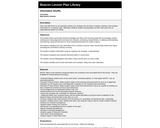
In this lesson, students explore, examine, and evaluate information for a research topic, and develop an organizational pattern for writing.
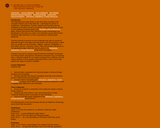
Drawing on the 'Character Stories' section of this Web site, students perform a role playing exercise to examine the motives, beliefs and values of the men and women who made Athens the center of the Greek world. The "Site Index" link on this page will provide more relevant links for each character: http://www.pbs.org/empires/thegreeks/htmlver/ The video references to the documentary are not necessary.
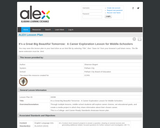
Through multiple lessons, students will explore career choices, set educational goals, and create a media project in which they share information about their chosen career.